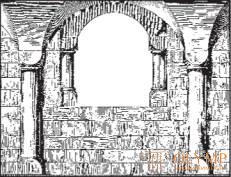
Architecture
Southern Germany, with the exception of the Upper Lane regions, with the architecture of which we have already become familiar with, did not introduce into the history of architecture such original artistic ideas as Middle and West Germany in the era of the mature Middle Ages. The movement that contributed to the development of new forms, went here from west to east. Lombard influence spread directly to Austria. A very important role in the whole evolution of South German architecture was played by the Hirsau School. But before characterizing this school, we must take a look at the development that has taken place outside the Girsau tradition. Here we should note the tendency to omit the transept, to arrange two side choirs next to the main choir, to keep flat ceilings and to move the towers to the east side of the building.
The Augsburg Cathedral, which originally had a double choir (see books of books 2, II, 3), in its present form represents a mixture of architectural styles from different times. The surviving choir and transept lie on the west side, and the towers tower on the east; nevertheless, it is still possible to guess the original plan of the cathedral as a Romanesque basilica with pillars dating from the first half of the eleventh century. Freising Cathedral (1160–1205) was a flat-covered basilica with pillars, without a transept, with empores, two western towers and a crypt famous for the fantastic sculptures of its columns. Church of sv. Emmerana in Regensburg, with its double choir and two crypts, belongs to the buildings of the still not fully developed Romanesque style. The portal of the northern side of the nave of this church, built between 1049 and 1060, consists of two niches, which are still framed with strictly antiquifying pilasters. In general, Regensburg along with Cologne is the city of Germany, the richest in Romanesque churches. The Regensburg Upper and Lower Cathedrals and the Scottish Church, to which we will return, belong to the most important architectural monuments of Germany.
In Tyrol, we find portals jutting out with columns that stand on lions, borrowed from Lombardy; such, for example, is the portal of the Tirol castle church. Further to the east, in the mountains of Salzburg, richly dissected, decorated with pillars portals without front extension, but with front columns resting on lions, spread. Curious is the oldest German cloister in the convent on the Mountain Nuns (Nonnberg) in Salzburg (Fig. 221). The semi-columns supporting the galleries of this cloister, devoid of ribs, have cuboid bases which are like cuboid caps turned upside down. Apparently, the Saxon influence affects the alternation of support (two columns through one pillar) in the church of Sts. Petra in Salzburg (1127–1131), later rebuilt in the Baroque style, and in the monastery church in Zeckau (1142–1195). The most important in Austria is a purely Romanesque basilica with pillars — the Cathedral in Hurk (1170–1218). On its western side, between the two towers, there is an outer porch, in the depth of which a luxurious portal arranged with columns is arranged, and inside, moreover, there are western emporians. The capitals of the columns are decorated with foliage, and the bases in the corners are decorated with fancy-shaped vultures. The most famous is the one-hundredth crypt of this cathedral.

Fig. 221. Part of the cloister's gallery on Mount Nun near Salzburg. Lubka
We now turn to the Girsau architectural school, studied in detail by Baer. The Benedictine monastery of Girsau near Calw, in Württemberg, was the distributor of the Cluny direction in Germany. The churches of this monastery, now turned into piles of ruins, reflected the German architectural forms of the second, built in the form of a flat-roofed basilica with columns and consecrated in 981 in the church of the Cluny Abbey. By order of Pope Leo IX, the Church of Sts. Aurelius (1059–1071) - a three-nave basilica with columns, an eastern transept and three abscesses, to which small naves soon continued, and as a result, lateral choirs formed along the sides of the main choir. The western porch, which had opened up inside the church with empores, was between two quadrangular towers. The middle nave had a flat ceiling; the side naves and vestibule were covered with simple cross vaults. The columns had strict cubic capitals without a ring and steep Attic bases without angular sheets. After the church of sv. Aurelius in Girsau built the church of St.. Petra (1082-1091) - a three-nave basilica with columns and an eastern transept, which had a flat surface everywhere. An octagonal bell tower towered above its center of the cross. A straight-cut eastern choir only inside, in the thick of the wall, had three niches; the real apses were on the eastern side of the branches of the transept.
Hirsau monks spread their principles of church architecture throughout Germany, mainly along the South. Their churches are almost all of the same type. Generally, these are flat-covered three-nave basilicas with columns, without crypts, but with an oriental transept, a three-nave choir device, which often has a rectangular end, and with a porch between the western towers, instead of which sometimes stands a tower above the center of the cross, followed by the eastern towers. The circular arch reigned supreme, the columns crowned with cuboid capitals; the bases, initially devoid of corner sheets, then gradually received them. Exterior decoration of churches - nobly harsh. Shoulder blades and arc friezes are rare, but fantastic ugly sculptural figures sometimes appear next to the portals. Most of the buildings of the Girsau style originated between 1082 and 1150; only a few of them date back to the beginning of the thirteenth century.
Typical buildings in this style are the monastery churches in Dissibodenberg, Gengenbach and Schwarzach, the church of Sts. Gilgen in Klein-Komburg and the church in Steinen-Rhine. The Benedictine churches in Alpirsbach and Ellvangen, remaining buildings of the Hirsau type, are no longer free from the influence of Maulbronn (see below). The Elwangen Church, completed in 1233, is the first large basilica of Swabia, covered with vaults in all its parts. The Cathedral of Constance is very close to it, with its rectangularly ending chorus, in the form it received in 1054–1089. His romance crypt is ancient; on the contrary, its western towers were erected later. The vaults of this cathedral are late Gothic. Schaffhausen Cathedral, the flat-covered basilica with columns, with a direct ending of the choir, covering all three naves, is a characteristic construction of the Hirsau style.
In Bavaria, Franconia and the neighboring parts of Austria, the Hirsau architectural style was equally manifested in all its splendor. For example, in Bamberg, the church built on a mountain of St. Michael (consecrated in 1026), although it was not with columns, but with columns, but otherwise was an exemplary building of the Girsau school. In Regensburg church of sv. Jacob, known by the name of the Scottish Church, about the wonderful sculptures of which we will speak later, being flat-roofed, devoid of a transept basilica with columns, western emporians and eastern towers, endowed with the main features of the Girsau school. In Würzburg, this school owns the church of Sts. Burkhard, whose columns stand on heavy bases that do not yet have corner leaves.
In Austria, some features of the Girsau School are visible, for example, in the Zekkau Cathedral. Saxony and Thuringia, as evidenced by the churches in Paulinzell and Gamerslebene, also showed signs of the influence of this Hirsau’s Benedictine art, which, although almost did not generate new architectural ideas, it also played a prominent role in the history of German architecture.
Following the Clunyans (Benedictines), the Cistercians arrived in Germany. They also brought here their own architectural style, which, no matter how simple and unpretentious, left an even deeper trace in the world history of architecture than the Cluny style. As elsewhere, this style in Southern Germany marks the transition to Gothic. In Franconia, the Cistercian church in Ebrach, near Bamberg (founded in 1126), has such a choir arrangement as we saw in the somewhat later church of Riddagsgausen, near Braunschweig. Bronnbach, near Wertheim, has its first German building, founded in 1151 by the Cistercian monastery church, in which, with its individual Romanesque forms, we find arched vaults everywhere. The exemplary construction of the Cistercian style and at the same time its best monument in Swabia and even in the whole of Southern Germany is the Cistercian abbey of Maulbronn in Württemberg, although in its magnificence it is already beyond the scope of the modest rules of the order; erected in 1146–1178 in the Romanesque style, this abbey after 1210, as P. Schmidt proved, was expanded and rebuilt in transitional style. The Maulbronn church is a cruciform in plan, which had an initially flat ceiling of basilica with a spacious vaulted choir, behind the straight end of which, on both sides of the middle chapel, there are three side chapels. The building is decorated still quite simply, in the Romanesque genus, with paddles and arcature friezes; inside there are columns with cubical capitals, circular-arched and round windows, but also windows ending in the top with a pointed arch. The builder of the eastern parts of the church, from which its construction began, left the building in 1171 to begin the construction of the eastern parts of the Cathedral of Worms (see fig. 205). But the greatest influence on the South German architecture was acquired by the post-maleoman parts of the abbey, the builder of which, Bonensack, outside Maulbronn, performed the “episcopal choir” in the choir of the Magdeburg Cathedral. The most excellent work of this highly skilled master is the western porch of the Maulbronn church, the so-called paradise, with its three-faced arches of windows, columns, which are encircled with rings and topped with cup-shaped capitals, circular arched vaults, diagonal of the original shape of the ribs which hang down below the arches. The cloister's gallery is charming, especially its southern wing, still in transitional style; very beautiful and, as examples of two-room premises, are interesting monastery halls: the refectory for the brethren, the refectory for the laity, the hall of the chapter, etc. All the details are of great freshness and grace. The quiet, strict monastic world imperceptibly turns here into a luxurious, bright world of beauty.
There are wonderful Cistercian churches in Austria; the three most important of them — the church in Heiligenkreutz, Lilienfeld, and Cvettela, like the Maulbronn church, are endowed with picturesque galleries of cloisters of transitional style.
However, this style, both in southern Germany and in Austria, was not exclusively the property of the Cistercian monasteries. Transitional style of the first half of the XIII century belong to the oldest parts of the majestic church of St.. Sebald in Nuremberg. Echoes of the Rhine School and at the same time traces of French influence are shown in the Bamberg Cathedral; although its individual forms, with the exception of excellent sculptures, do not shine with freshness and grace, and its four corner towers are too symmetrical and monotonous, but in general it is the most beautiful of the architectural creations of the mature Middle Ages, preserved in Germany. Bamberg Cathedral, laid under Henry II, in 1012, with two choirs, two crypts and a western transept, was destroyed in 1081 by fire. Its preserved building, the third in a row, belonging to the transitional style - vaulted, but still retaining two basilica choruses with pillars and a western transept - was started in 1192 and consecrated in 1237. The small turrets, which are arranged in corners ended only in 1274 The western towers resemble Lansky Cathedral. The magnificent portals and windows of the eastern part of the cathedral are still circular-arched; the windows in the western part and the upper windows of the towers are lancet. Inside (fig. 222), the semi-columns of the pillars bear lancet arches and pointed cross vaults, and the latter are equipped with ribs. The overall impression of the building is rather romance-free outside, mostly predominantly gothic inside. The gallery of the cloister attached to the church of Sts. Emmeram in Regensburg with a relatively rare zigzag ornament in Germany at this time on the northern entrance portal.
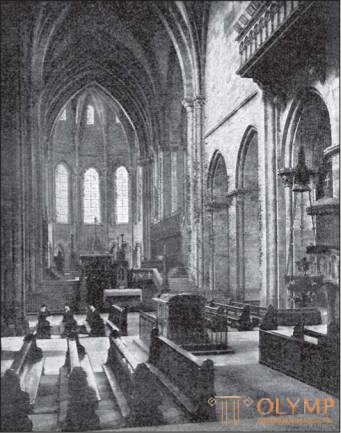
Fig. 222. The interior of the Bamberg Cathedral. From the photo of Gafa
Consideration of the transitional style in Austria leads us to Vienna, to the Cathedral of St.. Stephen, whose Romanesque predecessor was consecrated in 1141. From the middle of the 13th century, the present magnificent cathedral was erected, the oldest parts of which can still be called Romanesque. On the inner surface of the circular arches of the “Giant Gate” (portal of the western facade), the zigzags of the Regensburg church of Sts. Emmerama
A very significant development was the transitional style in Bohemia and Moravia. The comparatively simple Benedictine church in Trebic, and the more luxurious church of the monastery in Tišnovice, also present Romanesque forms along with Gothic ones; nevertheless, it was in these localities, where a purely Romanesque style did not precede the transitional style, church architecture takes on the character of an established Gothic style.
Civilian buildings Romanesque time South Germany is not as rich as the average. Even Nuremberg Castle and Tirol Castle are of little curious for the history of architecture. Regensburg has several Romanesque houses. The most beautiful Romanesque gates, topped with two towers above the circular-arched gallery, are located in Comburg, near the Swabian Gall. Here we meet the same individual forms as in church architecture: arc friezes, paddles, columns with cubical capitals and attic bases. However, the few Romanesque architectural monuments of these localities nevertheless make it possible to judge how uniformly finished and at the same time how diverse the world of forms was in use, covering in those days not only churches and monasteries, but also town halls, residential buildings, gates and bridges. .

Fig. 223. Part of the doors of the Augsburg Cathedral. From the photo Göfle
Plastics
A little differently than in the Saxon lands and in the Rhineland, the sculpture of the mature Middle Ages was developed in southern Germany and Austria. About the French influence, with the exception of Franconia, the waters of which flow to the Rhine, there can be no question here, as well as the influence of the Lombard. In general, the South German plasticity of this era, since it was free from Byzantine influence, which can only be noted in some cases, developed quite independently, of course, without departing from the basis of early medieval art.
In Augsburg and Regensburg we find some works belonging to the middle of the XI century. First of all, the relief images on bronze plaques, which overlaid the doors of the Augsburg Cathedral, now hung in its southern portal (Fig. 223), are worthy of attention. On some of these 35 boards, the same story is repeated twice. Many contain only one figure on a smooth background, but more lively compositions contain a small number of figures, almost without accessories. Pagan scenes, such as the centaur shooting the lion, alternate with the biblical: the creation of Eve, the struggle of Samson with the lion. In their totality, these reliefs are depicted, adhering to medieval symbolism, the Fall and the Atonement. A woman throwing food to chickens obviously means the Church. The figures are quite proportional, show some understanding of the forms and are not deprived of expression, but how archaic their style is, for example, in the image of the eye en face with a profile turn of the head, just like in the initial period of Greek art. The clothes are strikingly calm, with almost no folds. Awkwardness everywhere is uniquely combined with the desire to transmit free movement.
In Regensburg, painted wooden figures in the vestibule of the Church of Sts. Emmerama: on the middle pillar, between the doors, Christ in red clothes and at His feet, in a round medallion, busty image of the founder of the church; on the side pillars, beside the doors, on one side - of sv. Emmers, on the other - St. Dionysius, figures, full of dignity and tranquility, but short-lived and sedentary, with straight strands of hair schematically divided and eyes bulging. A hundred years younger stone sculptures of the Scottish church (the Church of St. Jacob) in Regensburg. Capitals and bases of columns inside the church are decorated with images of various animals; outside, above the north doors and to the sides of them, we find a whole fauna, fantastic and bizarre, reminiscent of the sculptural decoration of the facade of the church of San Pietro in Spoleto. In the tympanum, Christ is sculpted on the throne, between the apostles James and John the Baptist, and on the parts of the wall adjacent to the portal are strict, dignified figures of the apostles and church fathers. Но далее следуют женщина с тремя рыбьими хвостами рядом с шотландскими миссионерами, две мужские фигуры и возле них — десять львов, драконы и снова львы в различных положениях подле изображений Спасителя и Богоматери. Все эти рельефы выполнены в довольно неуклюжих формах, и многие из них очень загадочны; однако ясно, что ключ к их объяснению надо искать не в северных сказаниях о «сумерках богов», как это думал Зиггарт, но, согласно мнению Гольдшмидта, в псалмах.
Такой же характер имеют скульптуры крипты Фрейзингского собора, принадлежащие второй половине XII столетия. На базах и капителях 24 колонн и 21 полуколонны этого собора помещены разнообразнейшие мотивы животного и человеческого тел. Особенно любопытна чрезвычайно обильная животными элементами средняя колонна (рис. 224); она окружена со всех сторон рельефным, выполненным в грубых, но жизненных формах изображением борьбы людей с драконами. Спасение человека из пасти дракона и здесь играет роль; вместе с тем именно для этих рельефов почти непосредственными образцами представляются фигурные инициалы Псалтыри Альбани (см. рис. 182).
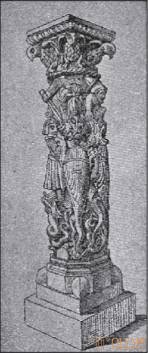
Fig. 224. «Звериная колонна» в крипте Фрейзингского собора. По Зиггарту
Здесь в грубоватых художественных формах проявляется подлинный немецкий дух; недаром на одной из капителей в этой крипте мы встречаем такое немецкое имя изготовившего ее мастера, как Лиутпрехт.
Предшественницами этих регенсбургских и фрейзингских произведений могут считаться фантастические скульптуры монастырских церквей в Мюнхсмюнстере (теперь на ограде кладбища в Ландсгуте) и Биберге, относящиеся к середине XII столетия. Но, по-видимому, уже под влиянием портала Шотландской церкви изваяна группа в тимпане портала Моосбургского собора (конец XII столетия), изображающая Христа среди святых и коленопреклоненных основателей собора.
As a “belated product” of the Freising direction, Rill looked at the fantastic sculptures of the cloister's gallery built around 1250 at the monastery church in Berchtesgaden, while in the freer and cleaner sculptures of the monastery of St. Zeno, near Reichengal, dating back to the same time, saw only some of the features of this wildly fantastic direction.
Even freer and softer in style of sculpture in some areas of Western Bavaria. In the middle of the 13th century, sedentary figures, almost the size of the Savior, the Mother of God and the Apostles, were decorated with altar fences in the monastery church in Wessobrund, now stored in the Munich National Museum. The features of the faces of these figures are correct and not deprived of expression, the texture of the draperies is free, but tough. Rill is right to deny the influence of the northern and southern portals of Chartres Cathedral, the traces of which some other researchers tried to find. Compared with modern sculptures of Vekselburg and Freiburg, these figures are crude and lifeless. The same time belong to the sculptures of a two-story chapel in the Trausnitz castle in Landsgut. Here, on the pillars to the right and left of the niche of the choir of the lower floor, St. Barbara and Catherine. On the wall to the left is a relief with the image of the Annunciation. But of particular interest are the large sedentary figures on the upper balustrade of the choir: Christ, the Virgin and John among the twelve apostles - statues that occupy the entire width of the chapel and conceived, probably as the main figures of the Last Judgment. The rather free forms of these figures give them an early Gothic character. Their large, full of life, smiling faces express unearthly bliss. The coloring of these figures is well preserved, although it has been renewed in some places.
Less curious painted tomb figures of the same time in the chapel of St. Afra in Landsgut. In general, South German tombstones cannot compare with Saxon ones. The figure of Otto Zemoser (died in 1231) on his gravestone in the Freising Cathedral is very clumsy; The oldest, dating back to 1200, the gravestone sculptures of bishops in the Würzburg Cathedral are also still hard and lifeless.
In Bavaria there is no shortage of large wooden Crucifixes. Collections of such works are in the German Museum, Nuremberg, and the Munich National Museum. They are mostly preserved old coloring. Especially well we can trace the already familiar to us the development of the Crucifixes of the Munich Museum. And they can see how the eyes of the Crucified One gradually close, His head wilts, His legs cross. Some wooden figures of the sitting Mother of God are interesting, in the same collections, testifying to the gradual growth in this era of a sense of plastic form.
We now turn to the west, east, and north of southern Germany. In the west, among the works that should be considered in connection with South Korean monuments of plastics are sculptures of the Great Cathedral of Zurich: around the northern portal, partly lifelessly frozen, partly clumsy, fantastic sculptures of the XII century; in the cloister's gallery, part of the wildly fantastic, part of the comic content, sculpture of the beginning of the XIII century. In the east, in the Viennese cathedral of sv. Stephen, it should be noted the rigid, deprived image of the Savior, carried by angels, in the tympanum of the “Giant Gate”; it corresponds to the lifeless half-figures of the saints on the architrave. On the southern portal of the church of sv. Magdalene in Breslavl (circa 1226), along with biblical and fantastic barbarically executed images, there are graceful ornaments. The sculptural decoration of the portal of the monastery church in Tišnovice, Moravia, and cleaner and more noble later than 1238, and related to him in the style of the sculpture of the portal of the church in Saint-Yak, Hungary. About the ornaments that are surrounded in Tishnovice with figures (Christ in tympanum, twelve apostles on the side walls), Lyubka said: “Naturalistic leafy and floral ornaments of young Gothic are skillfully combined with the flexible Romanesque arabesques; thus, the autumn flora of the earlier epoch and the spring flowers of the new time are mixed together. ”
To the north of old Bavaria, in Franconia, we find the most significant school of monumental sculpture in all of southern Germany. Its main center is Bamberg. A large sculptural workshop was associated with the construction workshop of Bamberg Cathedral, which has shown extensive and diverse activities during the life of many generations. Regarding the sculptures of the Bamberg Cathedral after the publication of the work of Vase, an extensive literature was compiled, in which Goldschmidt, Frank and Vöge each contributed. In Bamberg, as well as in Magdeburg and Strasbourg, we must sharply distinguish the earlier school of the first decades of the thirteenth century from the later school that was already operating in the second half of this century. From the sculptures of the outer decoration of the Bamberg Cathedral, the first school includes an image of Our Lady in Tympanum above the northern doors of the Eastern Choir (above the Doors of Grace) and figures on the left side wall of the main portal (Princes' Doors) overlooking Carolina Square. Sculptures of the tympanum (Last Judgment) and the right wall of this portal are already a transition to a later style, the best works of which are recognized by the female figures “Church” and “Synagogue”, right and left near the tympanum, above. The aforementioned figures of the side walls of the main portal, of which only the left bear the imprint of a genuine old Bamberg style, depict apostles standing on the shoulders of the prophets - not quite a good translation of the metaphor into the language of forms. But the main works of the early Bamberg school are inside the cathedral. They decorate the north and south sides of the fences of the eastern choir, known as Georgievsky. The foremost relief of the north side depicts the Annunciation, and the same relief on the south side depicts Michael the Archangel. Then follow on each side six pairs of apostles and prophets, placed in false arcades (Fig. 225). Under each arch is depicted one apostle and one prophet, talking animatedly among themselves. This clearly reflects the influence of the mysteries, in which the protagonists were often the prophets. Faces of figures are full of individual expression, gestures are very natural and dramatic, although they are rather rough; one only draperies, as is customary, conditional. Despite the angularity and rigidity of their style, these groups belong to the greatest creatures of the beginning of the XIII century. The presence of French influence, which was tried to find here, can hardly be recognized; Byzantine influence can be allowed only in individual motifs borrowed from applied art, mainly in draperies. In general, the tendency in science to explain every kind of artistic creation by its influence should be significantly weakened. Together with Frank, we recognize in the oldest Bamberg workshop (works of which are also located in neighboring districts, for example, in Eringen) local Franconian school of the first half of the 13th century, and in its creations we are struck primarily by German severity, German strength and German freshness.
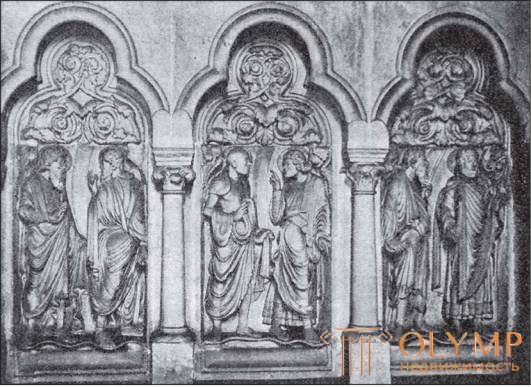
Fig. 225. The groups of prophets from the St. George Choir in Bamberg Cathedral. From the photo of Gafa
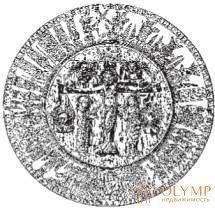
Fig. 226. Diskos Viltensky monastery, near Innsbruck. By Falke
Artistic-industrial cast bronze articles are also found in southern Germany, although with respect to these easily portable works, the question of what area of Germany they are performed in often remains unresolved. The church of the Benedictine abbey of Komburg, near Gwall of Swabia, has a large, richly decorated sculpture, a hanging chandelier like the Hildesheim and Aachen (see Fig. 217), dating back to the middle of the XII century. The most famous candelabrum of this era is kept in Prague Cathedral: lions and many-winged winged dragons threaten the naked male figures sitting on them, and grab the legs of dressed men who sit quietly between them, arms outstretched. We have already seen these images many times in the Romanesque art of Germany: they symbolize the struggle between the forces of light and darkness. In Viltensky monastery, near Innsbruck, there is a diskos (fig. 226) and chalice, belonging to the number of the most excellent German products of the XII century of precious metals. The diskos is decorated with a high relief image of the Savior on the cross, surrounded by the Virgin Mary, the Apostle John and the symbols of the four evangelists. The chalice is covered with numerous engraved and niellirovannym images, reminiscent of those, which we have already indicated as the rudiments of copper engraving.
Painting
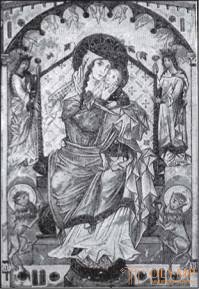
Fig. 227. The Virgin in glory. Part of the frescoes in the western emporic cathedral in Gurka. By Borrmann
In the non-Renean areas of Southern Germany, murals of the Romanesque era, which have historical and artistic significance, have been preserved almost exclusively in the Alpine countries. Of the church frescoes north of the Alps, mentioned by Janichek, Regensburg frescoes are now dead; biblical images in the chapel of the Forchheim castle, near Bamberg, and in the church of neighboring Dornstadt, although they belong to the 13th century, are still characterized by low mobility and lifelessness, and 12 poorly preserved frescoes from the gallery of the cloister of the Rebdorf monastery, near Eichstadt, are located in the Munich National Museum and depicting the story of Daniel and the three youths, arranged with such mannered movements that they should be attributed to the end of the XIII century. But in the Alpine provinces of Austria survived several prominent Romanesque church paintings. Moving from north to south, we find biblical images in the belfry at the church in Lambach, which in their tranquil, low-vital style should be attributed to the XII century. At the same time, the images of young saints in the tower on the Hill of the Nuns (Nonnberg), near Salzburg, indicate half-figures, well-conceived but schematic, motionless and devoid of expression. More lively and attractive frescoes end of the XII century in the church of St.. John in Pürghe, near Aussee: on the walls of the longitudinal body, below - painted carpets, above them - biblical scenes, and above, near the windows - wise and foolish virgins; in the choir - the figures of the saints, larger than in nature, and above them, in the middle of the vault, the Lamb of God. Farther south, in Carinthia, the cathedral in Hurk is famous for the late frescoes of its western emporic works, which, although executed between 1251 and 1279. and therefore, strictly speaking, belong to the next epoch, however, with regard to style, they cannot be separated from the monuments of the end of the Romanesque period. These murals that have a blue background are freely placed in semi-circular arches. On the western compartment of the vault, in its four lobes, the Earthly Paradise and the Fall are depicted, on the east - Heavenly Jerusalem with the Lamb of God in the center. The arches of the New Testament are presented on the arches of the West. But the main image here is the Mother of God in glory, seated on the throne between the prophets and the allegories of virtues, written in the arch of the eastern wall (Fig. 227). Slender and mobile figures, even the completely naked figures of Adam and Eve, are almost completely different in body shape, are drawn fairly clean. Restlessly draped with folds that are broken at an angle, suitable for the inner vivacity of the whole. These broken contours of dressed figures everywhere characterize the end of the German-Romanesque style. In Tyrol, in the Catholic chapel of the Hohenpan Castle, we find several frescoes, first described by Dalke, in purely Romanesque frames; of them, at least Madonna apse, calm and stately agile, belongs to the middle of the XII century. In a more lively style of the second half of the XII century, an image was written of a young Christ seated on a rainbow in glory, located in the church of Marienberg Abbey, in the mountains of Wincgau. The frescoes of the second half of the 13th century in the chapel of Sv. John in Brixen, depicting St. Christopher, the Adoration of the Magi and the Crucifixion, while the fantastic monsters in the choir of the church of Sts. Jacob in Tramina, who, in contrast to the majestic figures of the apostles written here, personify sinfulness, are now before us as old acquaintances.

Fig. 228. David. Stained glass window of the Augsburg Cathedral. By bucher
In the history of painting on glass, the Benedictine monastery of Tegernsee in Southern Bavaria was considered to have played a prominent role. It possessed around 1000 stained glass windows with figured images, as evidenced by written sources; but then, on the basis of other sources, even earlier stained glass windows were indicated in Zurich and, with greater certainty, in Verdun on Ruhr. In any case, it was established that around 1000, the abbot of the monastery of Tegernsee Gotsbert, was praised by the colored painted glass (picturae) of his church, recognizing that they were not performed in Tegernsee, but in another place (perhaps in Regensburg); it is no less firmly established that soon after that masters of stained glass were called up in Tegernsee and that in the first half of the 11th century there existed a school of painting on glass, the works of which did not reach us. The oldest surviving stained-glass stained-glass windows with figured images, despite all objections, we continue to consider five glasses from the second half of the 11th century in the windows of the Augsburg Cathedral. On these glasses, built into later unpainted glass of a larger size, individual figures of Moses, David (fig. 228) and the prophets Jonah, Daniel and Hosea are depicted using graceful framed frames. All of them have hats and raincoats painted in different bright colors, and each of them holds an unfolded scroll in his hand. The coloring of these stained glass - light, festive; it is dominated by red, green and yellow, and blue does not play any role. No less remarkable of its kind are the stained glass windows of about 1200 in gray-green tones in the gallery of the cloister and in the south wing of the church of the Cistercian monastery Heiligenkreutz in the Vienna Woods. Accordingly, with the strict rules of the Cistercian Order, these glasses are devoid of figurative images and do not shine with variegated colors, but their ribbons, arabesques, simple patterns, in which quite bright colors are rarely found, show the romance ornamental art to us in the highest degree noble and calm.
The beginnings of easel painting are represented in southern Germany by an altar of the mid-13th century, originating from Rosenheim in Bavaria and stored in the Munich National Museum. Heavenly coronation of the Virgin Mary is depicted on a black background; Christ, laying a crown on Her head, sits among the twelve apostles. The contours are black, the styling is replaced by red spots on the cheeks and lips. With the altar image from Zest (see figs. 201 and 202) this work does not bear any comparison. The samples of the South German notched enamel of the XII century are four plates stored in the sacristy of the Vienna Cathedral. Of these, one represents the blessing of Jacob Ephraim and Manasseh. With good technique, the drawing in this image is restless and wrong; German blue-green flavor prevails here. The best of the German-Romanesque artistic embroidery, preserved in southern Germany, we find on the magnificent priestly vestments from the church of St. Blasius in St. Paula, in Carinthia, and in full altar and priestly vestments in a convent in Goss, in Styria.
The miniature book art presents us in South Germany more significant cycles of related images. In it, along with works of a religious nature, we already encounter works of secular painting. The manuscripts of the High German poets (XII – XIII cc.), Produced primarily in southern Germany, are decorated with numerous drawings, in which Western artists, left to themselves, have discovered considerable craftsmanship. But for savings in colors and for greater speed in work - as we think with Gazeloffo
Что бы оставить комментарий войдите
Комментарии (0)